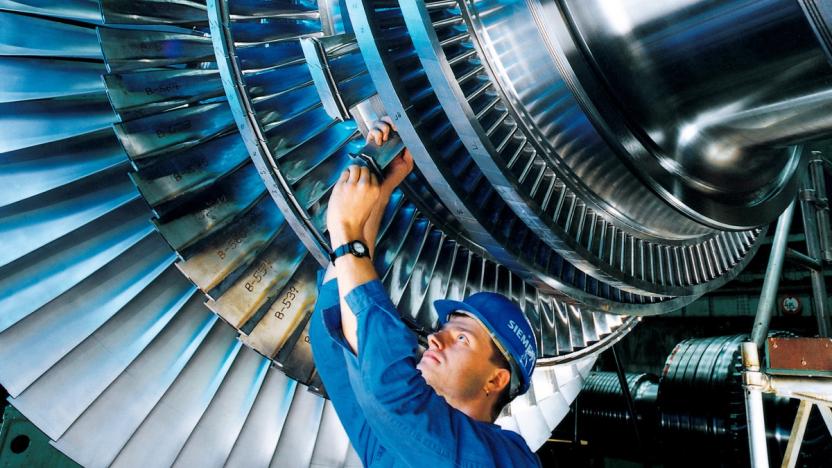Coal, gas or nuclear power plants – they all produce electricity in the same way as they did back in the age of the steam engine: water is heated and turns to steam, the steam rises and turns the turbine that drives the electrical generator. But steam cycles are pretty inefficient. Turbines that are driven by steam only capture about 30 percent of the energy from the incoming steam and end up wasting the rest. How could they be made more efficient?
The solution is: carbon dioxide. Yes, it’s one of the gases most at fault for climate change and global warming, but it can also be used to drive turbines more efficiently. The world’s first natural gas power plant that runs on this system will be going into operation this year. It’s still in the test phase for now, but the results seem to have convinced experts. Three further 300-megawatt gas power plants with CO2 turbines are under construction and should be joining the grid in the next five years. The promise: power plants with zero emissions.
How Can CO2 Be Used to Drive Turbines?
It’s a two-part process known as the Allam cycle: the combustion of the gas and then the capture of the CO2. Unlike other combustion processes, here natural gas is burned with pure oxygen, rather than air. This generates water and carbon dioxide as a byproduct. Because the CO2 is at a high temperature and high pressure it is called “supercritical”, and it is able to function as a liquid, meaning it can replace steam and actually drives the turbines in a way that is up to 30 per cent more efficient.
This so-called “oxy-fuel, supercritical CO2 power cycle” uses much less water than traditional power plants (although it uses some for cooling) and produces only electricity, liquid water and so-called “pipeline-ready CO2” – no nitrous oxides or particulates.
The leftover CO2 can be looped around for reuse and/or sold on for other commercial uses, such as in solvents, for cement, for cleaning paper money or even producing decaffeinated coffee.
It will be a few years before the technology has been fully developed. Maybe by then we won’t even be using coal and gas power stations any more. But the process could have implications for thermal and solar power stations too. RESET recently reported on a negative emissions thermal power station in Iceland that captures CO2 and stores it underground in basalt rock. CO2 could also be used here to drive the station’s turbines.
This is a translation by Marisa Pettit of the original article which first appeared on RESET’s German-language site.





